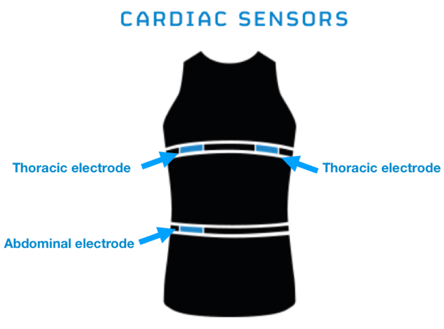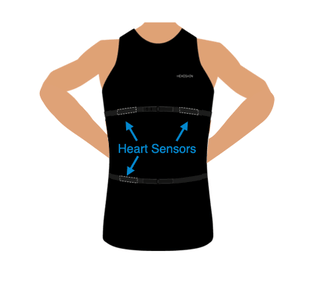Applying conductive cream on the cardiac sensors
To ensure accurate cardiac data, it’s important to apply a conductive cream (or water*) to the cardiac sensors (the bronze patches inside the Shirt). Without a conductive agent, the sensors may not properly detect the heart’s electrical signals, leading to unreliable data.

Before you start a recording session
-
Put the shirt on carefully without stretching it too much (for more details, refer to this [link]).
-
Roll up the lower part of the shirt to expose the abdominal cardiac sensor (bronze patch).
-
Apply a nickel-sized amount of glycerin-based cream to the abdominal sensor. Do not rub the cream into the fabric — leave it sitting on the surface.
-
Roll the lower part of the shirt back down.

For the thoracic cardiac sensors
-
Gently stretch the right-side armpit opening of your shirt until you see one of the thoracic cardiac sensors.
-
Apply a nickel-sized amount of glycerin-based cream to the sensor. Again, do not rub the cream into the fabric.
-
Repeat steps 5 and 6 for the other thoracic sensor.
-
Fasten the elastic belts.
💡 Important Notes
-
If you use water instead of cream, re-moisten the sensors about every 1–2 hours.
-
If you use cream, reapply about every 24 hours, or whenever you remove and put the shirt back on.
-
During intense physical activity, sweat can substitute for water and maintain conductivity.
✅ Once you’ve applied the cream, simply connect your Hexoskin Device — and you’re ready to record!